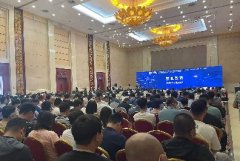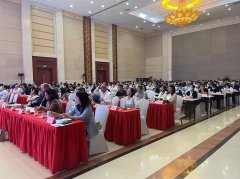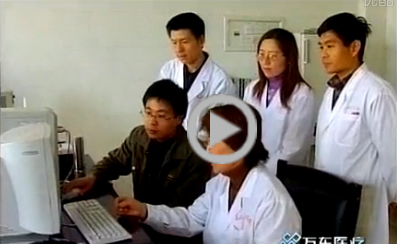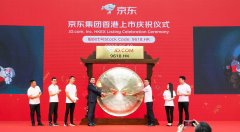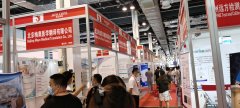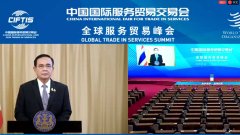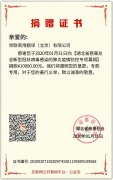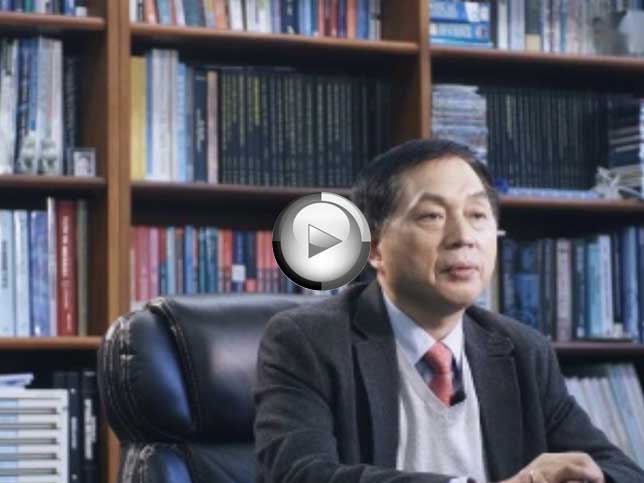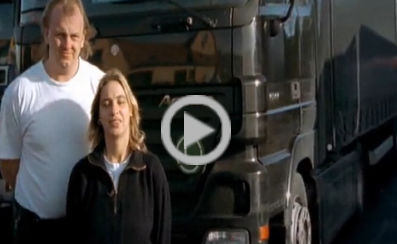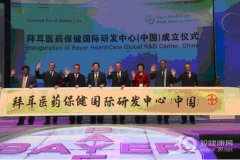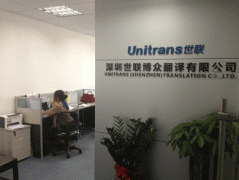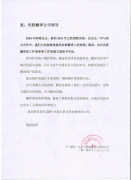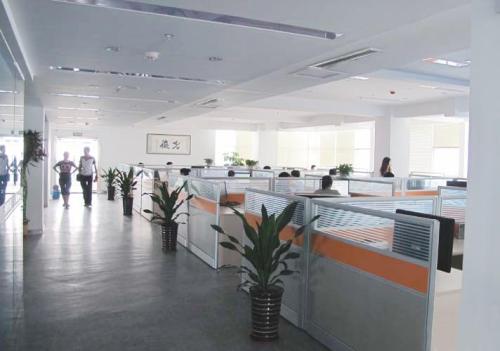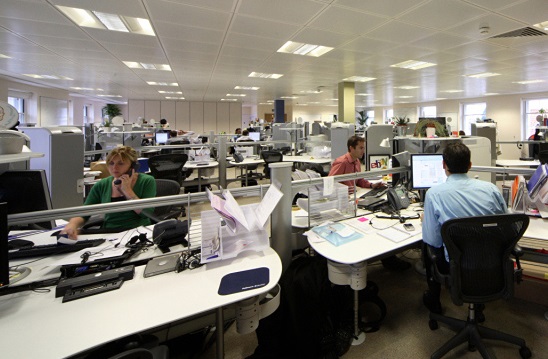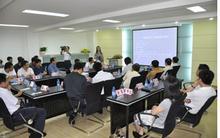上海翻译公司完成钢构标准英文翻译
时间:2018-05-23 08:49 来源:未知 作者:dl 点击:次
上海翻译公司完成钢构标准英文翻译

RIO TINTO IRON ORE EXPANSION PROJECTS Document Number: SKM-STD-C-009
Standard Specification for Fabrication and Revision: 0
Erection of Structural Steel Issue Date: 25 September 2008
SKM ACN 001 024 095 ABN: 37 001 024 095
P:\SKM_GEN\Deliverables\Specifications\SKM Standard Specs\Civil-Struct-Marine\SKM-STD-C-009 Rev 0 Fabrication & Erection of Structural Steel.doc
CONTENTS
1.0 SCOPE 1
2.0 ABBREVIATIONS 1
3.0 CODES AND STANDARDS 1
3.1 Standard Specifications 2
3.2 Australian Codes and Standards 2
3.3 Statutory Regulations 4
4.0 MATERIALS 5
4.1 General 5
4.2 Certification 5
4.3 Substitution of Sections 6
4.4 Steel Plate 6
4.5 Hot Rolled Sections 6
4.6 Welded Sections 6
4.7 Floor Plate 6
4.8 Hollow Sections 6
4.9 Cold Formed Galvanised Steel Section 6
4.10 Fasteners 6
4.11 Grating 7
4.12 Stairways, Ladders and Handrails 7
5.0 INSPECTION AND TESTING 7
5.1 Material Testing 8
5.2 Weld Testing and Inspection 8
5.2.1 Visual Inspection 8
5.2.2 Non-Destructive Testing, SP Welds 9
5.2.3 Content of Non-Destructive Testing (NDE) Reports 10
5.2.4 Testing of Fatigue Purpose (FP) Welds 10
5.2.5 Representative Sampling 10
5.2.6 Repair of Sub-Standard Welds 10
5.3 Inspection by the Engineer 10
5.4 Inspection During Fabrication 11
5.5 Inspection During Erection 11
5.6 Surface Protection 11
6.0 FABRICATION 11
6.1 General 11
6.2 Shop Drawings 12
6.3 Tolerances 12
6.4 Cutting and Bending 12
6.5 Splices and Joints 12
6.6 Bolt Holes 13
6.7 Tubular Construction 13
6.8 Steel Grating 14
6.9 Purlins and Girts 14
7.0 BOLTING 14
7.1 General 14
7.2 Stainless Steel Bolted Connections 15
7.3 Mild Steel Bolts 15
7.3.1 Commercial and Precision Bolts 15
7.3.2 High Strength Bolted Connections 16
RIO TINTO IRON ORE EXPANSION PROJECTS Document Number: SKM-STD-C-009
Standard Specification for Fabrication and Revision: 0
Erection of Structural Steel Issue Date: 25 September 2008
SKM ACN 001 024 095 ABN: 37 001 024 095
P:\SKM_GEN\Deliverables\Specifications\SKM Standard Specs\Civil-Struct-Marine\SKM-STD-C-009 Rev 0 Fabrication & Erection of Structural Steel.doc
8.0 WELDING 16
8.1 General 16
8.2 Welding Supervision 17
8.3 Minimum Fillet Weld Size 17
8.4 Preheating 17
8.5 Butt Welds 17
8.6 Procedure and Performance Qualifications for Welding 18
8.7 Weld Materials 18
8.8 Site Welding 18
8.9 Weld Repairs 19
9.0 SURFACE PROTECTION 19
9.1 General 19
9.2 Gilsomastic Paint 19
10.0 MARKING 19
10.1 General 19
10.2 Method 19
10.3 Location 19
10.4 Column Levelling Marks 20
11.0 HANDLING, STORAGE AND DELIVERY TO 20
11.1 Handling and Storage 20
11.2 Delivery to 20
12.0 ERECTION AND ASSEMBLEY 21
12.1 General 21
12.2 Alignment and Fitting 21
12.3 Metal Floor Decking 21
12.4 Floor Grating 22
12.5 Erection Tolerances 22
12.6 Setting Base plates 22
13.0 HANDRAILS 22
13.1 Fabrication and Erection 22
13.2 Surface Protection 23
14.0 MODIFICATION TO STRUCTURAL STEELWORK 23
14.1 General 23
14.2 Modifications and Corrections 23
14.3 Cutting 24
14.4 Holing 24
14.5 Finishing 24
15.0 GROUTING 24
15.1Preparation 24
15.2 Formwork 25
15.3 Grout 25
15.4 Curing 25
16.0 CLEAN UP 25
APPENDICES
Appendix A ?Stainless Steel Fasteners
Appendix B ?Structural Grade Carbon Steel Fasteners
RIO TINTO IRON ORE EXPANSION PROJECTS Document Number: SKM-STD-C-009
Standard Specification for Fabrication and Revision: 0
Erection of Structural Steel Issue Date: 25 September 2008
Page: 1
SKM ACN 001 024 095 ABN: 37 001 024 095
P:\SKM_GEN\Deliverables\Specifications\SKM Standard Specs\Civil-Struct-Marine\SKM-STD-C-009 Rev 0 Fabrication & Erection of Structural Steel.doc
1.0 SCOPE
This specification covers the requirements for the fabrication and erection of
structural steel and mechanical steelwork, including materials, inspection and
testing, fabrication, bolting, welding, handling, storage, delivery to, erection,
modifications and grouting of base plates.
2.0 ABBREVIATIONS
The abbreviations listed below, where used in this specification, shall have the
following meanings:
AS Australian Standard
SAA Standards Association of Australia
AS/NZS Australian Standard / New Zealand Standard
WTIA Welding Technology Institute of Australia
NATA National Association of Testing Authorities
AINDT Australian Institute of Non Destructive Testing
3.0 CODES AND STANDARDS
The latest revision of the following documents shall form part of this specification
and shall apply wholly or partially as the case may be and as necessary for the
performance of the Work under the Contract.
The contractor shall advise the Engineer in writing of any of the requirements of
this specification that are of a lower standard than the local Standard or the
contractor standard practice.
Local or international standards with requirements equal to or greater than the
Standards nominated herein may be applied with the written approval of the
Engineer.
In the event of inconsistencies between documents, drawings or reference
standards pertinent to the Contract, the more stringent requirements shall apply
unless approved otherwise in writing by the Engineer.
RIO TINTO IRON ORE EXPANSION PROJECTS Document Number: SKM-STD-C-009
Standard Specification for Fabrication and Revision: 0
Erection of Structural Steel Issue Date: 25 September 2008
Page: 2
SKM ACN 001 024 095 ABN: 37 001 024 095
P:\SKM_GEN\Deliverables\Specifications\SKM Standard Specs\Civil-Struct-Marine\SKM-STD-C-009 Rev 0 Fabrication & Erection of Structural Steel.doc
3.1 Standard Specifications
Specification No. Title
SKM-STD-C-005 Supply and Placement of Concrete
SKM-STD-C-006 Placement of Concrete
SKM-STD-C-007 Anchor Bolts
SKM-STD-C-010 Fabrication & Erection of Structural Steelwork for Marine
Works
SKM-STD-C-011 Surface Preparation, Painting and Galvanising of Steelwork
SKM-STD-G-001 Drawing and Documentation / Data Requirements
3.2 Australian Codes and Standards
Unless otherwise specified or shown, the latest edition of the relevant Australian
Codes and Standards, including but not limited to, the following:
Australian Standard Title
AS 1101 Part 3 - Graphical symbols for general engineering
?Welding and non-destructive examination
AS 1110 ISO Metric hexagon bolts and screws ?Product Grades
A and B
AS 1111 ISO Metric hexagon bolts and screws ?Product Grade C
AS 1112 ISO Metric hexagon nuts
AS 1163 Structural steel hollow sections
AS/NZS 1170 Part 0 ?General principles
Part 1 ?Permanent, imposed and other actions
Part 2 ?Wind actions
Part 4 ?Earthquake loads
AS 1171 Non-destructive testing ?Magnetic particle testing of
ferro-magnetic products, components and structures
AS 1214 Hot-dipped galvanised coatings on threaded fasteners
AS 1237 Plain washers for metric bolts, screws and nuts for
general purposes
AS/NZS 1252 High strength steel bolts with associated nuts and
washers for structural engineering
AS 1275 Metric screw threads for fasteners
AS 1397 Sheet steel and strip ?Hot dipped zinc-coated or
aluminium/zinc-coated
AS 1418 Cranes, hoists and winches
RIO TINTO IRON ORE EXPANSION PROJECTS Document Number: SKM-STD-C-009
Standard Specification for Fabrication and Revision: 0
Erection of Structural Steel Issue Date: 25 September 2008
Page: 3
SKM ACN 001 024 095 ABN: 37 001 024 095
P:\SKM_GEN\Deliverables\Specifications\SKM Standard Specs\Civil-Struct-Marine\SKM-STD-C-009 Rev 0 Fabrication & Erection of Structural Steel.doc
Australian Standard Title
AS/NZS ISO 14343 Welding Consumables ?wire electrodes, wires and rods
for arc welding of stainless and heat resisting steels ?
Classification
AS/NZS ISO 17633 Welding consumables ?Tubular cored electrodes and
rods for gas shielded and non-gas shielded metal arc
welding of stainless and heat resisting steels ?
Classification
AS/NZS 4854 Welding Consumables ?Covered electrodes for manual
metal arc welding of stainless and heat resisting steels -
Classification
AS/NZS 4855 Welding Consumables ?Covered electrodes for manual
metal arc welding of non-alloy and fine grain steels ?
Classification
AS/NZS 4856 Welding Consumables ?Covered electrodes for manual
metal arc welding of creep resisting steels ?
Classification
AS/NZS 4857 Welding Consumables ?Covered electrodes for manual
metal arc welding of high strength steels ?Classification
AS/NZS ISO 17632 Welding Consumables ?Tubular cored electrodes for
gas shielded and non-gas shielded metal arc welding of
non-alloy and fine grained steels ?Classification
AS/NZS ISO 17634 Welding Consumables ?tubular cored electrodes for gas
shielded metal arc welding of creep-resisting steels ?
Classification
AS/NZS ISO 18276 Welding Consumables ?Tubular cored electrodes for
gas shielded and non-gas shielded metal arc welding of
high strength steels ?Classification
AS/NZS 2717 Welding ?Electrodes ?Gas Metal Arc ?Ferretic steel
electrodes
AS/NZS 1554 Structural steel welding
AS 1579 Arc welded steel pipes and fittings for water and
wastewater
AS 1627 Metal Finishing ?Preparation and Pre-Treatment of
Surfaces
AS 1657 Fixed platforms, walkways, stairways and ladders ?
design, construction and installation
AS 1710 Non-destructive testing ?Ultrasonic testing of carbon and
low alloy steel plate ?Test methods and quality
classification
AS 1789 Electroplated zinc (electro galvanised) coatings on
ferrous articles (batch process)
AS 1796 Certification of welders and welding supervisors
AS 1858 Electrodes and fluxes for submerged arc welding
RIO TINTO IRON ORE EXPANSION PROJECTS Document Number: SKM-STD-C-009
Standard Specification for Fabrication and Revision: 0
Erection of Structural Steel Issue Date: 25 September 2008
Page: 4
SKM ACN 001 024 095 ABN: 37 001 024 095
P:\SKM_GEN\Deliverables\Specifications\SKM Standard Specs\Civil-Struct-Marine\SKM-STD-C-009 Rev 0 Fabrication & Erection of Structural Steel.doc
Australian Standard Title
AS 1966 Electric arc welding power sources
Part 1 ?Transformer type
Part 2 ?Rotary type
Part 3 ?Plasma arc cutting and welding types
AS 2159 Piling ?Design and installation
AS 2177 Non-destructive testing ?Radiography of welded butt
joints in metal
AS 2207 Non-destructive testing ?Ultrasonic testing of fusion
welded joints in carbon and low alloy steels
AS 2214 Certification of welding supervisors
AS 2812 Welding, brazing and cutting of metals ?Glossary of
terms
AS 2980 Qualification of welders for fusion welding of steel
AS/NZS 3678 Structural steel ?Hot rolled plates, floor plates and slabs
AS/NZS 3679 Structural steel
Part 1 ?Hot rolled bars and sections
Part 2 ?Welded I sections
AS 3990 Mechanical equipment ?Steelwork
AS 4100 Steel structures
AS 4291 Mechanical Properties of Fasteners
AS/NZS 4600 Cold-formed steel structures
AS/NZS 4673 Cold-formed stainless steel structures
ISO Standard Title
ISO 3506.1 & 2 Mechanical Properties of Corrosion Resistant Stainless
Steel Fasteners
International Standards with requirements equal to or greater than the
corresponding Australian Standards may be applied with the written approval of
the Engineer.
3.3 Statutory Regulations
The contractor shall be responsible for compliance of all Works with Australian
Government Acts, By-laws and Regulations, both State and Federal, including but
not limited to:
?Electricity Act Regulations (1945);
?Explosives and Dangerous Goods Act (1961) and Explosives Regulations
(1963);
?WA Electrical Requirements (1995) Particular Specifications;
RIO TINTO IRON ORE EXPANSION PROJECTS Document Number: SKM-STD-C-009
Standard Specification for Fabrication and Revision: 0
Erection of Structural Steel Issue Date: 25 September 2008
Page: 5
SKM ACN 001 024 095 ABN: 37 001 024 095
P:\SKM_GEN\Deliverables\Specifications\SKM Standard Specs\Civil-Struct-Marine\SKM-STD-C-009 Rev 0 Fabrication & Erection of Structural Steel.doc
?WA Occupational Safety and Health Act (1984);
?WA Occupational Health and Safety Regulations (1996);
?Mines Safety and Inspection Act (1994);
?Mines Safety and Inspections Regulations (1995);
?Transport Operation (Marine Safety) Act (1994);
?Machinery Safety Regulations.
Where Works may be performed outside of Australia, the contractor shall comply
with all applicable International and National Acts, By-laws and Regulations.
4.0 MATERIALS
4.1 General
All materials shall be from an assured source and shall be new and of unused
stock and free from splices for the full length between joints unless otherwise
approved by the Engineer (see Section 6.6). All steel shall be free from rust,
pitting and other defects which are likely to impair either its structural capacity or
the quality of the protective coating system.
4.2 Certification
The contractor shall obtain manufacturer抯 material test certificates or certified
reports of tests made by a NATA certified testing laboratory (or by an overseas
facility which must be acceptable to the Engineer) for all steel plate and sections
demonstrating compliance in all respects with the specified standards. The
manufacturer抯 certificates shall be available at the manufacture抯 workshop upon
request. All such plates and sections shall have clear and distinct marks
identifying the respective grades of steel. The type of certificate required shall be
as follows:
Material Certificate Type
The certificate types shall conform to the requirements of Standard EN 10204
Type 2.2.
Carbon Steel Test Report (with mention of the test results carried out on the
basis of non-specific testing and inspection). Document
validated by the Manufacturer.
Welding
Consumables
Test Report (with mention of the test results carried out on the
basis of non-specific testing and inspection). Document
validated by the Manufacturer.
Fasteners Test Reports shall be in accordance with Appendix A or B,
whichever is applicable.
RIO TINTO IRON ORE EXPANSION PROJECTS Document Number: SKM-STD-C-009
Standard Specification for Fabrication and Revision: 0
Erection of Structural Steel Issue Date: 25 September 2008
Page: 6
SKM ACN 001 024 095 ABN: 37 001 024 095
P:\SKM_GEN\Deliverables\Specifications\SKM Standard Specs\Civil-Struct-Marine\SKM-STD-C-009 Rev 0 Fabrication & Erection of Structural Steel.doc
All data listed in the certificates and reports shall be shown in SI units, in
accordance with AS 1100 International System of Units (SI) and its application.
Certificates shall be written in the English language and shall be complete,
unambiguous, legible and suitable for electronic scanning. Certificates in other
languages will only be accepted if they are supplied with an endorsed English
translation by an authority approved by the Engineer.
The Engineer will perform random examination of material certificates to check
compliance with these requirements.
4.3 Substitution of Sections
Substitution of structural steel sections or variation of details shown on the
drawings shall not be made without the prior written approval of the Engineer.
4.4 Steel Plate
All steel plate shall be Grade 250 to AS 3678, unless noted otherwise on the
drawings.
4.5 Hot Rolled Sections
All hot rolled sections shall be Grade 300 (i.e. BHP-300 Plus), unless noted
otherwise on the drawings.
4.6 Welded Sections
All standard welded beams (WB) and welded columns (WC) shall be Grade 300 to
AS 3679.2, unless noted otherwise on the drawings (i.e. AS/NZS 3679.2-300).
4.7 Floor Plate
All floor plate shall be Grade 250 to AS/NZS 3678, and shall have a raised pattern
surface (i.e. AS/NZS 3678-250).
4.8 Hollow Sections
All structural hollow sections shall comply with AS 1163. All rectangular and
square hollow sections and circular hollow sections of diameter greater than or
equal to 168.3mm and less than or equal to 457.0mm shall be grade C350 (i.e.
AS1163-C350), unless noted otherwise on the drawings. Other hollow sections
shall be grade C250 (i.e. AS 1163-C250), unless noted otherwise on the drawings.
4.9 Cold Formed Galvanised Steel Section
Cold formed galvanised steel sections shall be formed from Grade 450 hot-dipped
zinc coated steel as specified in AS 1397.
4.10 Fasteners
All bolts, washers and nuts shall comply with the relevant Australian Standards
and where specified shall be supplied with an anti-corrosion treatment comprising
one of the following systems, as specified on the drawings:
RIO TINTO IRON ORE EXPANSION PROJECTS Document Number: SKM-STD-C-009
Standard Specification for Fabrication and Revision: 0
Erection of Structural Steel Issue Date: 25 September 2008
Page: 7
SKM ACN 001 024 095 ABN: 37 001 024 095
P:\SKM_GEN\Deliverables\Specifications\SKM Standard Specs\Civil-Struct-Marine\SKM-STD-C-009 Rev 0 Fabrication & Erection of Structural Steel.doc
i) Hot-dipped galvanized in accordance with AS 1214, unless noted,
otherwise;
ii) Zinc plated in accordance with AS 1397 where specified on the drawings,
or;
iii) Stainless steel Grade 316 to AS/NZS 4673 bolts, nuts and washers
Strength Classes A4-50 and A4-70 depending on size (unless noted
otherwise), where specified on the drawings.
The requirements for mechanical properties of fasteners are set out in Appendices
A and B.
Refer to Section 7.0 for additional bolting requirements during construction.
4.11 Grating
All grating shall be mild steel, 慦ebforge?F325MPG or 慦eldlok?B60-325
galvanised (or Engineer approved equivalent) unless noted otherwise on the
drawings. All stair treads shall be 慦ebforge?T6 (ex F325MPG) or 慦eldlok?T6
(ex B60-325) galvanised with replaceable non-slip stair tread nosing, or Engineer
approved equivalent. Grating used on dolphins shall be 慦ebforge?F325MSG or
慦eldlok?B60-325 serrated galvanised, or Engineer approved equivalent.
All grating shall be hot dipped galvanised.
4.12 Stairways, Ladders and Handrails
All materials for stairways and ladders shall be in accordance with AS 1657.
All handrails shall be the 慚onowills?handrail system, unless otherwise nominated
or approved by the Engineer.
5.0 INSPECTION AND TESTING
The contractor shall be responsible for all inspection testing and reporting of the
Works specified in this document. Any independent testing authority used shall
have the appropriate NATA certification to carry out the range of testing specified.
All testing for which the contractor is responsible shall be reported directly to the
Engineer. In the event of materials or work being rejected as a result of inspection
or testing, the contractor shall be responsible for the replacement, repair and
further testing of the materials or work.
RIO TINTO IRON ORE EXPANSION PROJECTS Document Number: SKM-STD-C-009
Standard Specification for Fabrication and Revision: 0
Erection of Structural Steel Issue Date: 25 September 2008
Page: 8
SKM ACN 001 024 095 ABN: 37 001 024 095
P:\SKM_GEN\Deliverables\Specifications\SKM Standard Specs\Civil-Struct-Marine\SKM-STD-C-009 Rev 0 Fabrication & Erection of Structural Steel.doc
5.1 Material Testing
Material certification shall be supplied for all material in accordance with Section
4.2.
The contractor shall be responsible for ensuring that the chemical and mechanical
properties of all steel used in the Works comply with this specification. Chemical
analysis and mechanical testing, including tension, bend, flattening and impact
tests, shall be performed for each batch of steel. Testing shall be performed by
the steel manufacturer or by an approved laboratory. Results shall be presented in
a manner that demonstrates compliance to the requirements of Australian
Standard AS/NZS 3678 (or an approved equivalent International Standard), and
shall be submitted to the engineer when available but before the relevant materials
are incorporated into the works.
The Engineer reserves the right to decide whether or not a plate is considered to
be acceptable and may or may not be used in the Works. The contractor shall
replace all material rejected by the Engineer.
In the event that the manufacturer is unable to produce steel manufacturer抯
certificates in accordance with Section 4.0 when requested by the Engineer,
specimens for testing shall be prepared by the contractor and shall be tested by an
independent NATA registered laboratory, as part of the contractor抯 responsibility.
Testing of specimens shall be carried out in accordance with relevant Australian
Standards.
Where the contractor is unable to produce steel manufacturer抯 certificates for the
through-thickness properties of steel plate 32mm thick or over, or the plate is
manufactured outside Australia, it shall be ultrasonically tested for flaws from both
sides for laminations and other defects in accordance with the requirements of AS
1710 Level 2.
Where the contractor has carried out testing as noted above, they shall issue all
test certificates and reports to the Engineer for approval prior to the tested steel
being used in the Works. The location and extent of inclusions and /or laminations
shall be detailed and sketched in the report.
5.2 Weld Testing and Inspection
The extent of inspection and testing of welds shall be as specified in Sections 5.2.1
and 5.2.2. Where testing levels are less than 100% the Engineer will have the
right to nominate the welds to be tested.
5.2.1 Visual Inspection
Visual inspections of all weld preparation and all welds shall be carried out in
accordance with AS/NZS 1554 except the extent of visual inspection shall be as
follows:
a) visual scanning ?100% of all weld preparations;
b) visual examination ?100% of all welds.
RIO TINTO IRON ORE EXPANSION PROJECTS Document Number: SKM-STD-C-009
Standard Specification for Fabrication and Revision: 0
Erection of Structural Steel Issue Date: 25 September 2008
Page: 9
SKM ACN 001 024 095 ABN: 37 001 024 095
P:\SKM_GEN\Deliverables\Specifications\SKM Standard Specs\Civil-Struct-Marine\SKM-STD-C-009 Rev 0 Fabrication & Erection of Structural Steel.doc
All visual inspections of welds shall be undertaken by a qualified welding inspector
who has not been involved in the supervision of the welding. Visual inspection
also includes the inspection of the weld preparation.
Should the weld fail the visual inspection criteria as defined in AS/NZS 1554, the
weld shall be rejected and no further non-destructive testing is prescribed until the
condition of the weld is rectified.
5.2.2 Non-Destructive Testing, SP Welds
The following non-destructive testing of welds shall be carried out by the contractor
using an independent NATA registered laboratory. The Engineer shall be advised
that the reports are available for review within ten (10) working days of the test
date.
All NDT Technicians must be fully qualified for the relevant testing to be
undertaken and be qualified to AINDT, PCN or similar. Copies of the technician抯
qualifications shall be made available for review prior to any NDT works being
undertaken.
The testing procedures to be used are:
i) radiographic testing;
ii) ultrasonic testing;
iii) magnetic particle testing.
The extent of testing shall be as follows:
?Shop Welds:
a) 100% of all shop complete penetration butt weld splices for beams
and columns using procedures (i) or (ii) and (iii);
b) all shop complete penetration butt welds, test 10% of the length of
all welds longer than 1000mm or a minimum of 10% (one in ten) of
all other complete or partial penetration welded joints where welds
are less than 1000mm long using procedures (i) or (ii);
c) all critical welds as specified on the drawings and/or noted in the
contract specification, where no procedure is nominated, using
procedures (i) or (ii) and (iii);
d) all shop fillet welds, test 10% of the length of all welds longer than
1000mm or a minimum of 10% (one in ten) of all other shop fillet
welded joints less than 1000mm long using procedure (iii).
?Field Welds:
a) 100% of all field complete penetration butt weld splices for beams or
columns, including using procedures (i) or (ii) and (iii);
RIO TINTO IRON ORE EXPANSION PROJECTS Document Number: SKM-STD-C-009
Standard Specification for Fabrication and Revision: 0
Erection of Structural Steel Issue Date: 25 September 2008
Page: 10
SKM ACN 001 024 095 ABN: 37 001 024 095
P:\SKM_GEN\Deliverables\Specifications\SKM Standard Specs\Civil-Struct-Marine\SKM-STD-C-009 Rev 0 Fabrication & Erection of Structural Steel.doc
b) 30% of all field complete penetration or partial penetration butt
welds shall be tested using procedure (i) or (ii) and (iii);
c) all critical welds as specified on the drawings and/or noted in the
contract specification, where no procedure is nominated, using
procedures (i) or (ii) and (iii);
d) 10% of all field fillet welds shall be tested using procedure (iii).
The maximum imperfection level for SP welds as determined by testing or
examination shall be limited to L/5 for all plate thicknesses.
5.2.3 Content of Non-Destructive Testing (NDE) Reports
All NDE reports shall contain as a minimum a drawing reference, unique weld
number (as per weld map), welder identification, weld type and exact position of
the test area, full detail of defective area as applicable, statement of compliance
and the name of the Technician and Testing Company.
5.2.4 Testing of Fatigue Purpose (FP) Welds
Unless noted otherwise, FP welds shall be subject to the following testing and
inspection in accordance with the requirements of AS 1554.5:
i) visual scanning 100%;
ii) visual inspection 100%;
iii) magnetic particle testing 100%;
iv) radiographic testing or ultrasonic testing 50%.
5.2.5 Representative Sampling
Where sampling of welded joints is required for non-destructive testing, such
sampling shall be consistent over the duration of shop fabrication and
representative of all types of welded joints, welding procedure specifications
(WPS) and also provide a representative sample of each welder抯 work.
5.2.6 Repair of Sub-Standard Welds
All welds failing to meet the permissible levels of imperfections allowed in
AS/NZS 1554 shall be removed or repaired to the satisfaction of the Engineer, and
then re-tested, along with two (2) extra samples of the same WPS and welder
output either as 10% of the weld length or 10% (one in ten) of all other welded
joints as applicable.
5.3 Inspection by the Engineer
The contractor shall give the Engineer 24 hours notice for inspections nominated
as Witness or Hold points on the contractor抯 ITP, or where the Engineer抯
approval is required for commencement of any stage of the Works.
RIO TINTO IRON ORE EXPANSION PROJECTS Document Number: SKM-STD-C-009
Standard Specification for Fabrication and Revision: 0
Erection of Structural Steel Issue Date: 25 September 2008
Page: 11
SKM ACN 001 024 095 ABN: 37 001 024 095
P:\SKM_GEN\Deliverables\Specifications\SKM Standard Specs\Civil-Struct-Marine\SKM-STD-C-009 Rev 0 Fabrication & Erection of Structural Steel.doc
5.4 Inspection During Fabrication
During fabrication, the contractor and subcontractor(s) shall permit the Engineer,
or his representative free access to the fabricators?works at all reasonable times
for the purpose of carrying out inspections, and shall afford all necessary facilities
for carrying out such inspections. Items shall be laid out as necessary so that all
parts are accessible for inspection as directed by the Engineer. Any inspection by
the Engineer will not prevent the ultimate rejection of any work or materials in
which defects have been found at any time prior to the completion of the Contract.
5.5 Inspection During Erection
During erection/installation, the contractor and subcontractor(s) shall permit the
Engineer, or his representative, free access to the Works at all reasonable times
for the purpose of carrying out inspections and shall afford all necessary facilities
for the carrying out of such inspections.
All field bolting and field welding shall be inspected during erection. All field weld
slag shall be removed prior to inspection.
Priming and painting in the vicinity of welds shall not be carried out over any field
welding until they have been tested in accordance with Section 5.2.
No concrete encasing or formwork installation shall be carried out until the
Engineer has inspected and approved the preparation of the steelwork to be
encased.
No grouting may take place until the Engineer has inspected and approved the
preparation of both the steel and concrete.
5.6 Surface Protection
Testing of protective coatings shall be in accordance with the Standard
Specification SKM-STD-C-011 揝urface Preparation, Painting and Galvanising of
Steelwork?
6.0 FABRICATION
6.1 General
All structural steelwork shall be fabricated as shown on the drawings and in
accordance with the requirements of this specification and AS 4100.
Substitutions of structural steel sections or modifications of design details shall
only be made with the written approval of the Engineer.
All members shall be pre-fabricated into sub-assemblies to facilitate field erection.
The maximum size suitable for sub-assemblies shall be subject to approval.
Site fit shall be the responsibility of the contractor. Consideration shall be given to
undertaking trial assembly of sub-assemblies prior to painting, but after abrasive
blasting and any stress relief.
RIO TINTO IRON ORE EXPANSION PROJECTS Document Number: SKM-STD-C-009
Standard Specification for Fabrication and Revision: 0
Erection of Structural Steel Issue Date: 25 September 2008
Page: 12
SKM ACN 001 024 095 ABN: 37 001 024 095
P:\SKM_GEN\Deliverables\Specifications\SKM Standard Specs\Civil-Struct-Marine\SKM-STD-C-009 Rev 0 Fabrication & Erection of Structural Steel.doc
The steelwork shall be fabricated complete with all necessary temporary brackets,
straps, gussets, cleats, fixings and the like necessary for handling, erection and
assembly of the steelwork.
Temporary fittings, bracings, stiffeners used as fabrication aids in the handling and
erection of steelwork or attachment and support of temporary Works shall be
welded in accordance with this specification. Such temporary fittings may be
allowed to remain in place with the written approval of the Engineer. The
contractor shall submit the type, size and location of all lugs to the Engineer for
approval where the lifting lug exceeds 5t Working Load Limit (WLL).
6.2 Shop Drawings
If directed by the Engineer, the contractor shall be responsible for the preparation
of all shop drawings required for the satisfactory fabrication of steelwork in
accordance with the drawings and specification. Shop drawings shall be prepared
in accordance with CLU-STD-G-001 揝tandard Specification for Drawing and
Documentation / Data Requirements?and shall be submitted to the Engineer for
approval before fabrication commences. Approval of shop drawings by the
Engineer will not relieve the contractor of any responsibility for the accuracy of the
drawings or the fabrication Works there from.
6.3 Tolerances
Tolerances for fabrication of structural steelwork shall be in accordance with AS
4100 unless shown otherwise on the drawings and/or Contract Specification. Such
tolerances are assumed to apply at 20篊.
6.4 Cutting and Bending
All structural steel components shall be plasma or flame cut, sheared or sawn to
the profile as shown on the drawings with the as-cut surfaces and edges in
compliance with AS/NZS 1554. After cutting, all edges shall be ground off to
provide a smooth, even and true profile. Sheared edges to be included in welded
joints shall be ground free of sharp edges.
Preparation of structural tubes for welding shall be in accordance with
AS/NZS 1554.
If members or plates are bent or set, the bends and sets shall be made to the radii
and angles specified and shall be free from hammer marks. Edges of plates to be
bent shall be ground smooth prior to bending.
All plates, gussets, members etc shall have sharp edges and corners rounded and
ground smooth to a minimum radius of 2mm.
6.5 Splices and Joints
Where available stock lengths of steel are shorter than the required length of a
member, splicing by complete penetration full section butt welds is permitted,
unless otherwise noted on the drawings. All splice welds not shown on drawings
shall be approved by the Engineer who shall be notified in writing of the position of
splice weld prior to the joining of the two (2) parts. All such welds shall be
RIO TINTO IRON ORE EXPANSION PROJECTS Document Number: SKM-STD-C-009
Standard Specification for Fabrication and Revision: 0
Erection of Structural Steel Issue Date: 25 September 2008
Page: 13
SKM ACN 001 024 095 ABN: 37 001 024 095
P:\SKM_GEN\Deliverables\Specifications\SKM Standard Specs\Civil-Struct-Marine\SKM-STD-C-009 Rev 0 Fabrication & Erection of Structural Steel.doc
subjected to 100% ultrasonic or radiographic and magnetic particle testing in
accordance with Section 5.2.
The minimum length of a spliced section component should not be less than six (6)
times the depth of the section or 1000mm, whichever is greater.
Welded splices in compound members shall be staggered, and the component
plates and sections spliced before compounding.
Critical field splices and joints shall be mated in the shop on completion of
fabrication to ensure satisfactory fit when installed.
Should the contractor wish to make field splices and joints, whether bolted or
welded, in addition to those shown on the drawings, or in different locations, such
connections shall be to the written approval of the Engineer in respect to design,
procedure and workmanship.
6.6 Bolt Holes
Unless otherwise noted on the drawings, holes for bolts (except anchor bolts to
footings) shall be not more than 2mm larger in diameter than the bolt which is to be
used. Where paint system SKM-P3 or SKM-P4 is used in accordance with SKMSTD-
C-011, holes for bolts shall not be more than 3mm larger in diameter than the
bolt which is to be used. Where stainless steel bolts are used with grommets, the
hole shall be 2mm larger than the grommet diameter.
Where steelwork is hot dipped galvanised, the contractor shall ensure the zinc
coating thickness within bolt holes does not exceed 200 microns.
Holes in base plates for anchor bolts to footings shall be not more than 6mm
oversize for anchor bolts up to and including 24mm in diameter and not more than
8mm oversize for bolts greater than 24mm in diameter.
Where slotted holes are specified or shown, such holes shall be accurately shaped
with sides smooth, parallel and semi-circular at the ends. Clearance tolerances
shall be as noted above. Length of slotted holes shall be defined as the distance
between centres of drilled or punched holes.
Round or slotted holes in structural steelwork shall not be flame cut. The areas
around holes shall be smooth and free of burrs and fins or other defects which may
prevent solid seating of the contact surfaces.
Punching of holes full size shall be carried out in accordance with AS 4100. Holes
may be punched to at least 3mm undersize and then reamed to full size.
Holes through tubular members shall be lined with sleeves and an external fillet
weld run around the perimeter of the sleeve to seal the gap between the sleeve
and the wall of the tube.
6.7 Tubular Construction
Structural steel tubes and rectangular hollow sections which are to be welded shall
not be sheared, but shall be cut and profiled to fit the shape of the members to
RIO TINTO IRON ORE EXPANSION PROJECTS Document Number: SKM-STD-C-009
Standard Specification for Fabrication and Revision: 0
Erection of Structural Steel Issue Date: 25 September 2008
Page: 14
SKM ACN 001 024 095 ABN: 37 001 024 095
P:\SKM_GEN\Deliverables\Specifications\SKM Standard Specs\Civil-Struct-Marine\SKM-STD-C-009 Rev 0 Fabrication & Erection of Structural Steel.doc
which they are to be welded. The Contractor shall make appropriate allowances to
ensure match of the mating faces for shop and site splices.
All tubes and hollow sections shall be fully sealed to prevent the ingress of
moisture. Unless noted otherwise, 5mm thick plate shall be used for sealing
purposes, where the members will not be fully sealed in the final fabrication or
erection. All fabricated box sections shall also be fully sealed.
Where galvanising is specified the contractor shall provide all holes in the
members required to ensure adequate venting and no deformation during the
galvanising process. Where galvanised and shown on the drawings, seal weld
and touch up all vent holes, prior to delivery to.
6.8 Steel Grating
Steel grating for floors, walkways, landings and stair treads shall be in sizes
suitable for handling and shall be suitably marked or tagged. The layout of the
panels shall be such as to facilitate their installation and securing in position by the
contractor.
Not withstanding any tolerances nominated by the grating manufacturer, the
contractor shall select, cut and trim each panel so that, when fixed in position, the
maximum difference in vertical level between adjacent edge bars of adjoining
panels shall be not more than 3mm and the maximum horizontal gap between
such edge bars shall be not more than 10mm.
All panels and all openings and recesses in panels for pipes, ducts, and the like,
shall be neatly trimmed all round with a continuous edge piece of at least the same
size as the load bars. All load bars shall be securely welded to the edge pieces.
The contractor shall prepare shop drawings detailing all penetrations required in
the flooring panels and all reinforcement required.
Penetrations to floor panels shall be cut and fabricated in the shop prior to hot dip
galvanising.
6.9 Purlins and Girts
Purlins and girts shall be continuous members, supplied and erected in
accordance with the Manufacturer抯 specification, complete with laps at splices
where required and central or double rows of bridging where shown.
7.0 BOLTING
7.1 General
Structural steelwork shall be bolted as shown on the drawings. All bolts, washers
and nuts shall comply with the relevant Australian Standards.
Unless specified otherwise, all bolted joints shall be made using Grade 8.8 high
strength bolts, nuts and washers.
RIO TINTO IRON ORE EXPANSION PROJECTS Document Number: SKM-STD-C-009
Standard Specification for Fabrication and Revision: 0
Erection of Structural Steel Issue Date: 25 September 2008
Page: 15
SKM ACN 001 024 095 ABN: 37 001 024 095
P:\SKM_GEN\Deliverables\Specifications\SKM Standard Specs\Civil-Struct-Marine\SKM-STD-C-009 Rev 0 Fabrication & Erection of Structural Steel.doc
The length of bolts shall be selected so that the threaded portion of the bolt shall
project through the nut a minimum two (2) threads and a maximum of 10 mm when
fully tightened and so that the nut can be fully tightened without reaching the end
of the thread.
Where bolted end cleats are used, they and the member to which they are
connected shall receive the full specified treatment before assembly.
Bolted connections subject to vibration and/or heavy loads shall be fitted with lock
nits approved by the Engineer. Such bolted connection may include but not be
limited to: platform support, walkways, conveyors, steelwork and secondary
steelwork.
7.2 Stainless Steel Bolted Connections
All bolts, nuts and washers used offshore below deck level shall be stainless steel
316 (minimum Grade A4) fitted with lock nuts unless shown otherwise on the
drawings.
All stainless steel bolts shall have rolled threads and be:
A4-70 For bolts less than or equal to M20
A4-50 For bolts greater than M20
All stainless steel bolts and nuts assembled with lock nuts shall have threads
treated with a nickel-based anti-seize compound. Stainless steel bolts assembled
into ferrules shall have 慙octite Threadlocker 243?or a similar approved removable
thread locking compound applied to the threads when installed, in accordance with
the Manufacturer抯 written instruction.
Stainless steel bolts shall be tightened to the correct torque using a torque wrench
in accordance with the Manufacturer抯 specification. Tightening torques shall take
into account lubrication of threads and nyloc nuts.
Where joint configurations include acetal grommets and/or neoprene spacers,
stainless bolts shall be tensioned such that joint integrity is achieved without
damage to acetal grommets and neoprene spacers.
7.3 Mild Steel Bolts
All mild steel bolts, washers and nuts shall be hot-dipped galvanised in accordance
with AS 1214.
7.3.1 Commercial and Precision Bolts
Commercial bolts may be used for field connections for handrails, cold formed girts
and purlins, stair treads, handrails, doors and window framing. Commercial bolts
are indicated on the drawings as 4.6/S in accordance with AS 1111, Clause 5.1.
Nuts and washers shall be compatible with the bolts used and members joined.
The length of bolt shall be selected so that the threaded portion of the bolt shall
project through the nut for a minimum of two (2) threads and a maximum of 10mm
when fully tightened.
RIO TINTO IRON ORE EXPANSION PROJECTS Document Number: SKM-STD-C-009
Standard Specification for Fabrication and Revision: 0
Erection of Structural Steel Issue Date: 25 September 2008
Page: 16
SKM ACN 001 024 095 ABN: 37 001 024 095
P:\SKM_GEN\Deliverables\Specifications\SKM Standard Specs\Civil-Struct-Marine\SKM-STD-C-009 Rev 0 Fabrication & Erection of Structural Steel.doc
7.3.2 High Strength Bolted Connections
High strength bolted connections shall be bearing-type (TB), unless otherwise
shown and shall be made in accordance with the provisions of AS 4100.
All bolts indicated on the drawings as 8.8/TB or 8.8TF may be tightened by the
direct-tension indication method or 揚art Turn?method specified in AS 4100. Bolts
tensioned using the direct-tension indication method shall be installed with a
galvanised load indicating device under the element (nut or bolt head) not turned in
tightening. The flat side of the load indicating washer shall be placed against the
steelwork with the protrusions facing towards the bolt head or nut, as appropriate.
Bolts installed by the direct-tension indication method shall be tightened in
accordance with AS 4100.
The contractor抯 proposed methods for bolt tightening shall be submitted to the
Engineer for approval. The tensioning of bolts using torque wrenches is not
permitted, except for stainless steel bolts.
One (1) flat round hardened steel washer shall be used under the nut for each
bolted connection except that if the bolt is turned during tightening then two (2)
washers shall be used, one under the nut and one under the bolt head. The bolt
may be turned only if the nut is not accessible and where the bolt may be turned
without interference or friction from bolt holes or steelwork.
Unless otherwise specified, bolts used on bevelled surfaces shall be provided with
bevelled washers which shall provide full bearing to the head and the nut.
8.0 WELDING
8.1 General
Welding shall be carried out strictly in accordance with the requirements of
AS 1554 unless specifically stated otherwise on the drawings. All welding shall be
carried out conforming to either GP (General Purpose) or SP (Structural Purpose)
categories as defined in AS 1554.1 or FP (Fatigue Purpose) as defined in
AS1554.5. The categories shall be used for the following purposes:
i) GP ?handrails, guards, minor brackets carrying light fittings, electrical
cable trays, etc;
ii) SP ?all structural connections including all bracing and cleat connections;
iii) FP ?connections subject to high levels of fatigue loading.
All stainless steel welds shall be category 18, Grade III as defined in AS/NAZ
1554.6 unless noted otherwise.
The finished surface profile of all welding shall be smooth and free from sharp
edges or crevices that would be detrimental to the performance of the structure or
to the protective treatment. All slag and weld splatter shall be thoroughly removed,
and the weld surface shall be replaced, repaired and ground as directed by the
Engineer to achieve the requirements of the standard Specification SKM-STD-C-
011 揝urface Preparation, Painting and Galvanising of Steelwork?
RIO TINTO IRON ORE EXPANSION PROJECTS Document Number: SKM-STD-C-009
Standard Specification for Fabrication and Revision: 0
Erection of Structural Steel Issue Date: 25 September 2008
Page: 17
SKM ACN 001 024 095 ABN: 37 001 024 095
P:\SKM_GEN\Deliverables\Specifications\SKM Standard Specs\Civil-Struct-Marine\SKM-STD-C-009 Rev 0 Fabrication & Erection of Structural Steel.doc
Undercutting shall be minimised to T/10 or 1mm maximum and weld toes shall
blend evenly with the parent plate.
8.2 Welding Supervision
Welding for Category GP, SP and FP shall be carried out under the supervision of
a welding supervisor complying with AS 1554.1 (or AS 1554.5), Section 4.12.1.
The welding supervisor shall hold appropriate certificates in accordance with
AS 1796 and/or AS 2214.
The appointment of a Welding inspector by the Engineer will not relieve the
Contractor of the responsibility to adequately supervise and control the quality over
all work carried out either in the workshop or on Site.
Notwithstanding the provisions of AS/NZS 1554, the sole authority for final
determination of quality and acceptance of welds will be the Engineer.
8.3 Minimum Fillet Weld Size
Unless otherwise shown on the drawings, the minimum weld size between
adjoining components, touching components, edges and faying surfaces shall be a
continuous fillet weld, Category SP, with a leg length as listed below:
i) 6mm for plates less than 16mm thick;
ii) 8mm for plates equal to or greater than 16mm thick and less than 32mm
thick;
iii) 10mm for plates greater than or equal to 32mm thick.
The plate thickness refers to the thinner of the elements being welded. In the case
of one (1) of the components having less thickness than 6mm, the fillet weld size
shall equal the thickness of the thinnest material.
8.4 Preheating
Preheating and inter-pass temperature control shall be performed in accordance
with AS 1554.1, Section 5.3.
8.5 Butt Welds
Run-on and run-off strips shall be used for butt welds and shall be removed on
completion of the weld and the attachment weld ground square and/or flush.
Backing strips will only be permitted if it is impossible to back gouge the root runs
or if full penetration cannot be achieved from one side. Permanent backing strips
are not permitted unless otherwise shown on the drawings.
Preparation of edges for butt welding shall be carried out by grinding, machining,
planning, machine flame cutting or plasma cutting. Manual flame cutting shall only
be carried out with the approval of the Engineer; however, surfaces to be
incorporated into welds shall then be ground.
RIO TINTO IRON ORE EXPANSION PROJECTS Document Number: SKM-STD-C-009
Standard Specification for Fabrication and Revision: 0
Erection of Structural Steel Issue Date: 25 September 2008
Page: 18
SKM ACN 001 024 095 ABN: 37 001 024 095
P:\SKM_GEN\Deliverables\Specifications\SKM Standard Specs\Civil-Struct-Marine\SKM-STD-C-009 Rev 0 Fabrication & Erection of Structural Steel.doc
Welds shown on the drawings as 慍P?are complete penetration butt welds. For
慍P?welds, the contractor shall determine the most appropriate complete
penetration butt weld detail for each particular location and submit the details to
the Engineer for approval.
Complete penetration butt weld symbols shown on the drawings are indicative of
design preference. The contractor may submit alternative complete penetration
butt weld details for the approval of the Engineer.
The size of cap (reinforcement) on butt welds shall not be greater than shown in
AS 1554.1, Table 6.2. Excess cap shall be ground to the required profile and shall
be free of surface breaking weld defects and gas holes.
8.6 Procedure and Performance Qualifications for Welding
For all weld categories, the contractor shall develop and submit to the Engineer for
approval, welding procedures and procedure qualification records designed to
produce welds in accordance with the requirements of the weld process and
intended duty prior to the commencement of Work.
In addition to the above requirements, the contractor shall document the applicable
welding procedure specifications including non-destructive examination, test
material certificates, test consumable certificates and destructive testing where
required.
All welders shall be certified and/or qualified in accordance with the relevant part of
AS 1554. The contractor shall submit copies of all certificates and/or qualification
records to the Engineer for approval prior to commencement of Work.
8.7 Weld Materials
Hydrogen controlled electrodes shall be mandatory for SP Category welding.
Electrodes shall be E48XX, except that E55XX (low hydrogen) shall be used for
welding Grade 450 steel, unless otherwise approved by the Engineer.
Electrodes to be furnished by the contractor for welding shall conform to,
standards listed in Section 3.2.
All consumables employed for the Works shall be supplied with batch certificates
in accordance with Section 4.2.
Tack welds shall be made with the same type of electrode that is used for
depositing the root pass, unless the tack weld is removed prior to welding.
8.8 Site Welding
Site welding shall not be permitted except where shown on the drawings or
specifically approved by the Engineer.
The contractor shall plan the Work as far as possible to limit the amount of
overhead welding.
RIO TINTO IRON ORE EXPANSION PROJECTS Document Number: SKM-STD-C-009
Standard Specification for Fabrication and Revision: 0
Erection of Structural Steel Issue Date: 25 September 2008
Page: 19
SKM ACN 001 024 095 ABN: 37 001 024 095
P:\SKM_GEN\Deliverables\Specifications\SKM Standard Specs\Civil-Struct-Marine\SKM-STD-C-009 Rev 0 Fabrication & Erection of Structural Steel.doc
8.9 Weld Repairs
Where it is necessary to repair welds that have failed the inspection criteria, the
contractor shall submit a repair procedure to the Engineer for approval prior to
commencing the Work.
9.0 SURFACE PROTECTION
9.1 General
All steelwork shall be painted or galvanised as specified on the drawings in
accordance with Standard Specification SKM-STD-C-011.
For galvanised steelwork, the contractor shall ensure that adequate drainage holes
are incorporated prior to dispatch for galvanising. Drainage holes shall be detailed
on the shop drawings. No holes shall be created with an oxyacetylene torch under
any circumstances.
9.2 Gilsomastic Paint
Gilsomastic paint, which contains asbestos material bound into the paint matrix,
has been applied as a protective coating on some existing steelwork at the Cape
Lambert facilities. Wherever Gilsomastic paint is identified on steelwork which is to
be welded or modified, the requirements of SKM-SMP-002 揝afety Management
Plan?and Hamersley Iron Procedure DO-OH-C0023 揥elding Structures Coated
with Gilsomastic Paint? shall be followed.
10.0 MARKING
10.1 General
All fabricated structural steel members shall be distinctly marked in accordance
with the marking diagram before being despatched to Site.
10.2 Method
The mark numbers shall be painted, using a stencil, on the member in oil paint and
shall also be stamped on the member using rounded stamps in such a manner that
the strength of the member is not affected.
Where the size of the member is such that the mark number cannot be stamped
on the member it may be stamped on a 1.5mm thick metal tag which shall be
securely fastened to the member by 12 gauge (minimum) wire.
All mark numbers shall consist of 15mm high characters as a minimum.
10.3 Location
All beams shall be marked on the top face at the North or East end.
All columns shall be marked on the North face approximately 200mm above the
base plate, or bottom end.
RIO TINTO IRON ORE EXPANSION PROJECTS Document Number: SKM-STD-C-009
Standard Specification for Fabrication and Revision: 0
Erection of Structural Steel Issue Date: 25 September 2008
Page: 20
SKM ACN 001 024 095 ABN: 37 001 024 095
P:\SKM_GEN\Deliverables\Specifications\SKM Standard Specs\Civil-Struct-Marine\SKM-STD-C-009 Rev 0 Fabrication & Erection of Structural Steel.doc
Horizontal bracing shall be marked at the North or East end.
Vertical bracing shall be marked at the bottom.
10.4 Column Levelling Marks
All columns shall be provided with legible levelling marks, scribe lines or centre
marks to facilitate the checking of vertical accuracy in two (2) directions at right
angles and the horizontal accuracy during erection. Marks and scribe lines shall
show the true theoretical centre line of the column.
11.0 HANDLING, STORAGE AND DELIVERY TO
11.1 Handling and Storage
All steelwork shall be handled and stored without overstress or deformation. It
shall be stored clear of the ground in such a manner so as to avoid collection of
water. Bolts, nuts and washers shall be supplied in grit-free containers and stored
in water-tight premises. Buried, damaged, corroded or otherwise unserviceable
bolts shall not be used.
Lifting studies shall be prepared and submitted for approval prior to lifting any
element weighting 20t or more.
11.2 Delivery to
All steelwork shall be delivered to in a condition conforming to the requirements of
the drawings and specifications. The Engineer and the Contractor will inspect
steelwork delivered to ensure it is undamaged and stored correctly.
Damaged materials or components shall be replaced unless the contractor is given
the Engineer's written consent to repair and erect them.
Signature of delivery dockets is not an acceptance that the items have been
delivered free of damage.
Care shall be taken during delivery, off-loading, stacking and erection so protective
coatings are not damaged. Damaged areas shall be made good by the contractor
to a quality consistent with the specified coating.
Responsibility for steelwork shall remain with the contractor until erected,
inspected and accepted by the Engineer.
RIO TINTO IRON ORE EXPANSION PROJECTS Document Number: SKM-STD-C-009
Standard Specification for Fabrication and Revision: 0
Erection of Structural Steel Issue Date: 25 September 2008
Page: 21
SKM ACN 001 024 095 ABN: 37 001 024 095
P:\SKM_GEN\Deliverables\Specifications\SKM Standard Specs\Civil-Struct-Marine\SKM-STD-C-009 Rev 0 Fabrication & Erection of Structural Steel.doc
12.0 ERECTION AND ASSEMBLEY
12.1 General
Unless otherwise shown on the design drawings, shop drawings and/or erection
drawings, erection of structural steel shall conform to AS 4100. Note however that
consideration must be given to the alignment of mechanical components and this
may be more onerous than the requirements of AS 4100.
All temporary bracing, supports and guys shall be designed and erected to take
care of all loads to which a structure may be subjected during erection, including
wind forces, mass of materials and equipment and stresses due to operation of
equipment. Such bracings, supports and guys shall be left in place so long as may
be required for safety.
In multi-storey structures, permanent fixing shall be carried out progressively,
following as closely as practicable behind erection. Unless otherwise agreed,
erection shall not continue more than three (3) levels above the last permanently
bolted or welded level.
Erection planning shall minimise the 憌orking at heights?risk in accordance with
the safety requirements.
12.2 Alignment and Fitting
Each part of the structure shall be properly aligned before completing field
connections.
All members in completed frames shall be true to line and free from bends, twists
and open joints. At assembly, all joints shall achieve face contact before full bolt
torque is reached.
Fitting-up bolts and drift pins shall not be used to bring improperly fabricated
members and parts into place, thus causing strain on bolts in the finished work.
Drift pins shall not be driven with such force as to deform adjacent metal.
No packing, shimming, or wedging will be permitted to correct imperfect work,
unless so directed by the Engineer.
All shop errors shall be reported and the proposed method of correction shall be
submitted for review. Minor mis-fitting may be remedied and corrected by reaming
or slight cutting as directed by the Engineer.
Damage caused by handling during erection shall be reported. Corrective
measures shall be completed as directed by the Engineer.
12.3 Metal Floor Decking
Floor plate units shall be adjusted to final position and brought to proper bearing
on the supporting members before being permanently fastened.
Floor plate units shall be fastened to supporting members by 20mm diameter plug
welds spaced at a maximum of 300mm centres at intermediate supports and
RIO TINTO IRON ORE EXPANSION PROJECTS Document Number: SKM-STD-C-009
Standard Specification for Fabrication and Revision: 0
Erection of Structural Steel Issue Date: 25 September 2008
Page: 22
SKM ACN 001 024 095 ABN: 37 001 024 095
P:\SKM_GEN\Deliverables\Specifications\SKM Standard Specs\Civil-Struct-Marine\SKM-STD-C-009 Rev 0 Fabrication & Erection of Structural Steel.doc
200mm centres at end and side supports unless otherwise noted. There shall be a
minimum of three welds at each side of each unit.
12.4 Floor Grating
The extent of floor grating and stair treads shall be as nominated on the drawings.
Grating shall be cut and strengthened as required to suit services and equipment
penetrations. All such openings shall be neatly trimmed and banded.
Grating sections shall be fastened using standard proprietary clips fixed using
thread-cutting fasteners. Clips are to be installed to the Manufacturer抯
specification. Clips are to be installed at 500 nominal centres. A minimum of four
(4) fasteners are required per panel. Main bars and cross bars of adjacent
sections shall be in line.
Any requirement to re-lift grating shall require an approved Permit to lift to be
issued by the Engineer and appropriate solid barricading to be in place, in
accordance with the Project Safety Management Plan.
12.5 Erection Tolerances
Erection tolerances shall be in accordance with AS 4100. Note however that
consideration must be given to the alignment of mechanical components and this
may be more onerous than the requirements of AS4100.
Unless otherwise shown, runway beam and rail tolerances for overhead cranes
shall not exceed those given in AS 1418.1.
12.6 Setting Base plates
Base plates shall be set and shimmed to correct positions and elevations shown
on the drawings and shall be subject to review after placing and plumbing and
aligning the first lift. Errors shall be corrected before proceeding further.
13.0 HANDRAILS
13.1 Fabrication and Erection
Handrails shall conform to the requirements of AS 1657. Handrails shall be
慚onowills?type or similar approved and shall consist of stanchions, top rail, mid
rail and kick plate unless otherwise shown on the drawings.
The layout of the handrails and kick plates shall be fully detailed by the contractor.
The shop details shall indicate the layout of the stanchions, details of their
attachment to the supports, the run of the rails and kick plates, location of closure
bends between the top and mid rails and of special bends and the method of
securing kick plates. Special bends are defined as bends having a radius of less
than 125mm on the centreline of the rail.
RIO TINTO IRON ORE EXPANSION PROJECTS Document Number: SKM-STD-C-009
Standard Specification for Fabrication and Revision: 0
Erection of Structural Steel Issue Date: 25 September 2008
Page: 23
SKM ACN 001 024 095 ABN: 37 001 024 095
P:\SKM_GEN\Deliverables\Specifications\SKM Standard Specs\Civil-Struct-Marine\SKM-STD-C-009 Rev 0 Fabrication & Erection of Structural Steel.doc
Particular attention shall be paid to the run of the handrail at the top and bottom of
each stair flight. Sudden offsets in the line of the stanchions requiring
unnecessary bends will not be permitted.
All joints in handrailing shall be complete penetration butt welds. Welds
connecting handrailing to stanchions and stanchions to the supporting steelwork
shall be 6mm fillets, unless otherwise detailed on the drawings.
The following general requirements for handrails shall apply unless noted
otherwise on the drawings:
i) handrails shall be fabricated as detailed on the drawings and delivered to
for bolting into place;
ii) rails shall be welded on to stanchions. Where rail connections between
stanchions cannot be avoided, an internal backing sleeve shall be used;
iii) kick plates shall be welded unless otherwise noted. Welds shall be a full
seal weld;
iv) generally stanchions shall be bolted to structures. Stanchions to dolphins
shall be welded into place;
v) welds on handrails shall be fully sealed and ground smooth;
vi) where handrails are continuous at changes of direction, stanchions shall
not be located more than 500mm from the direction change.
13.2 Surface Protection
Handrails, stanchions and kick plates shall be hot dipped galvanised and painted
in accordance with Standard Specification SKM-STD-C-011, 慡urface Preparation,
Painting and Galvanising of Steelwork?
CHS top and mid rails on the wharf and access jetty shall also be galvanised
internally.
14.0 MODIFICATION TO STRUCTURAL STEELWORK
14.1 General
No modification shall be made without the prior written approval of the Engineer.
Such fabrication and sub-assembly as may be necessary shall conform to the
requirements of this specification.
14.2 Modifications and Corrections
Procedures and methods for modifications and for corrections shall be submitted
to the Engineer for approval.
RIO TINTO IRON ORE EXPANSION PROJECTS Document Number: SKM-STD-C-009
Standard Specification for Fabrication and Revision: 0
Erection of Structural Steel Issue Date: 25 September 2008
Page: 24
SKM ACN 001 024 095 ABN: 37 001 024 095
P:\SKM_GEN\Deliverables\Specifications\SKM Standard Specs\Civil-Struct-Marine\SKM-STD-C-009 Rev 0 Fabrication & Erection of Structural Steel.doc
14.3 Cutting
Site cutting shall be wherever possible by a mechanical process. Where flame
cutting is necessary an allowance shall be left for grinding of ragged edges to
ensure a smooth finish.
14.4 Holing
Holes for bolts shall be drilled. Burning of such holes will not be permitted.
Correction of misaligned holes may be achieved by reaming or, subject to approval
by the Engineer, by filling badly misaligned holes with welded plugs or weld metal,
grinding flush and re-drilling correctly.
14.5 Finishing
Wherever remedial Work has been carried out, the affected area shall be cleaned,
burrs, slag and weld spatter removed and the paintwork made good in accordance
with Standard Specification SKM-STD-C-011, 慡urface Preparation, Painting and
Galvanising of Steelwork?
15.0 GROUTING
15.1 Preparation
Prior to the erection of steelwork, the concrete surface under the base or bearing
plate shall be given a scabble finish. All defective concrete and laitance shall be
removed from the concrete surface to be grouted by chipping or other approved
means. The resulting surface shall be rough and free of oil, grease, dirt and loose
particles. The underside of steelwork to be grouted shall also be clean of all dust,
oil, dirt and loose material prior to erection.
Polystyrene material used for foundation bolt blockouts shall be dissolved using a
product such as d-Limonene or similar approved. All residues shall be removed.
Temporary shims or wedges which are designated to be removed after grout has
hardened shall be coated with a thin coat of grease to facilitate removal.
Prior to beginning grouting, the concrete surface shall be saturated with water for a
minimum of six (6) hours. Just before grouting, all free water shall be removed
from the surfaces, keys and sleeves which are to be grouted.
Grouting procedures shall ensure the placement of grout under the entire surface
of the base or bearing plate avoids any possibility of air pockets or voids by
sufficient compaction.
Grouting procedures shall be submitted for approval by the Engineer prior to the
commencement of any grouting.
RIO TINTO IRON ORE EXPANSION PROJECTS Document Number: SKM-STD-C-009
Standard Specification for Fabrication and Revision: 0
Erection of Structural Steel Issue Date: 25 September 2008
Page: 25
SKM ACN 001 024 095 ABN: 37 001 024 095
P:\SKM_GEN\Deliverables\Specifications\SKM Standard Specs\Civil-Struct-Marine\SKM-STD-C-009 Rev 0 Fabrication & Erection of Structural Steel.doc
15.2 Formwork
Formwork shall be made from materials of adequate strength and shall be securely
anchored and shored to withstand the grout pressure under working conditions.
It shall be sufficiently water tight to prevent leakage and shall be caulked where
necessary.
Adequate clearances shall be provided between formwork and structural
steelwork, to allow the proper placement of the grout.
15.3 Grout
Grout shall be a non-shrink pre-mixed cementitious product of approved, standard
manufacture such as MBT Masterflow 870 or similar Engineer approved. Grout
shall be mixed, placed and cured in accordance with the grout manufacturer抯
instructions. Grout shall be non-staining and shall be suitable for the intended
purpose.
The average compressive strength of the grout at 28 days, standard cured shall
not be less than 70MPa, based on 50mm cubes prepared from grout of the same
consistency at which it was placed.
After initial set of the grout has taken place, the formwork shall be removed and
the excess grout cut away, leaving a full 45 degree chamfer smooth and neatly
finished. The chamfer shall extend from the underside of base plate level to the
top of concrete. All structural steelwork shall be cleaned of all grout on or above
the base plates and any damage to paintwork shall be repaired. Levelling devices
such as shims shall not be removed.
15.4 Curing
Sources of vibration which may cause settlement, bleeding or bond failures shall
be eliminated until the grout has set.
After the grout has sufficiently hardened, the grout shall be damp cured
continuously for a minimum period of three (3) days. Surrounding objects such as
steel base plates, directly in contact with grout, shall be wrapped or covered in
hessian bagging and maintained wet during the entire curing period.
At completion of the wet curing, all exposed grout shall be sealed by the
application of an approved curing compound.
16.0 CLEAN UP
The Work and work-area shall be left clean and tidy on completion and all surplus
materials and equipment removed from the Site.
RIO TINTO IRON ORE EXPANSION PROJECTS Document Number: SKM-STD-C-009
Standard Specification for Fabrication and Revision: 0
Erection of Structural Steel Issue Date: 25 September 2008
SKM ACN 001 024 095 ABN: 37 001 024 095
P:\SKM_GEN\Deliverables\Specifications\SKM Standard Specs\Civil-Struct-Marine\SKM-STD-C-009 Rev 0 Fabrication & Erection of Structural Steel.doc
APPENDIX A
STAINLESS STEEL FASTENERS
RIO TINTO IRON ORE EXPANSION PROJECTS Document Number: SKM-STD-C-009
Standard Specification for Fabrication and Revision: 0
Erection of Structural Steel Issue Date: 25 September 2008
SKM ACN 001 024 095 ABN: 37 001 024 095
P:\SKM_GEN\Deliverables\Specifications\SKM Standard Specs\Civil-Struct-Marine\SKM-STD-C-009 Rev 0 Fabrication & Erection of Structural Steel.doc
TESTING OF IMPORTED STAINLESS STEEL FASTENERS
1.0 PURPOSE
The purpose of the following procedure is to verify compliance of Grade A4-50 and
A4-70 Stainless Steel Corrosion Resistant Fasteners imported into Australia using
PMI, hardness and tensile testing methods.
2.0 SCOPE
This scope covers testing on a statistical basis with the relevant Australian and
ISO Standards for physical properties of all Stainless Steel Grade A4-50 & A4-70
Bolts, Nuts and Washers.
3.0 REFERENCES
AS1815.1 ?2002 Mechanical Materials ?Rockwell Hardness Test (HRA)
AS1817.3 ?2003 Mechanical Materials ?Vickers Hardness Test (HV10)
AS1391 ?2005 Metallic Materials ?Tensile Testing at Ambient
Temperature
ISO 3506 .1 & 2 Mechanical Properties of Corrosion Resistant Stainless
Steel Fasteners
All other standards referenced in those listed here which are relevant to the
dimensional, chemical and mechanical properties of stainless steel fasteners.
4.0 DEFINITIONS
?definitions shall be as shown in the above referenced Standards;
?PMI ?Positive Material Identification via Spectrographic Chemical Analysis.
5.0 PROCEDURE
5.1 Location
All testing shall be carried out in Australia by a NATA certified facility, or equivalent
facility approved by the Engineer.
RIO TINTO IRON ORE EXPANSION PROJECTS Document Number: SKM-STD-C-009
Standard Specification for Fabrication and Revision: 0
Erection of Structural Steel Issue Date: 25 September 2008
SKM ACN 001 024 095 ABN: 37 001 024 095
P:\SKM_GEN\Deliverables\Specifications\SKM Standard Specs\Civil-Struct-Marine\SKM-STD-C-009 Rev 0 Fabrication & Erection of Structural Steel.doc
5.2 Frequency
For bolts, the frequency of hardness and tensile testing shall be one (1) bolt per
1000 per batch. Where smaller batch quantities (less than 1000) are involved, one
(1) unit per batch shall be tested. Where smaller quantities of different grades are
involved (ie Gr A4-50, A4-70 etc), as one (1) unit per grade shall be tested.
Nuts, bolts and washers shall be PMI tested (via Spectrographic Chemical
Analysis) at a frequency of one unit per batch, regardless of the batch size.
5.3 Traceability
All bolts, nuts and washers shall be traceable to batch numbers by a suitable
means of identification such as tagging or colour coding.
5.4 PMI, Hardness and Tensile Testing Requirements
5.4.1 Bolts
Hardness testing shall be conducted on bolts in accordance with AS 1815.1 ?
2002 (Rockwell HRA) and AS 1817.3 ?2003 (Vickers HV10). The test shall be at
the threaded end face of the bolt opposite to the head.
The bolt threaded end face shall be ground flat and three (3) Rockwell (HRA) tests
conducted at the mid-radius position at 120 degree intervals.
Using the same bolt, conduct three (3) Vickers (HV10) tests also at the mid-radius
position at 120 degree intervals between the sites of the Rockwell tests.
The bolt shall then be tensile tested, recording the following data:
?yield (0.2% PS and 0.5% PS);
?tensile strength;
?percentage elongation;
?percentage reduction of area.
The Rockwell and Vickers hardness test results should also be recorded for each
bolt.
5.4.2 Nuts
Nuts shall be subject to PMI and Proof Load testing. Proof load testing shall be
carried out at the same frequencies as bolts (as shown at 5.2).
5.4.3 Washers
Washers shall be subject to PMI testing only.
RIO TINTO IRON ORE EXPANSION PROJECTS Document Number: SKM-STD-C-009
Standard Specification for Fabrication and Revision: 0
Erection of Structural Steel Issue Date: 25 September 2008
SKM ACN 001 024 095 ABN: 37 001 024 095
P:\SKM_GEN\Deliverables\Specifications\SKM Standard Specs\Civil-Struct-Marine\SKM-STD-C-009 Rev 0 Fabrication & Erection of Structural Steel.doc
5.5 Compliance
Using the above method, where the chemical properties or hardness and tensile
values fall outside the specified ranges, the entire batch (from which the sample
came) shall be rejected, physically identified, quarantined, and shall not be used.
5.6 Abstract
Research into the correlation of hardness to tensile values for Austenitic stainless
steels has revealed only limited Rockwell data. Therefore there is a need to better
correlate the Rockwell values and Vickers values against the tensile test results for
each bolt tested. This would allow eventual dropping of tensile testing while the
Vickers or Rockwell testing would continue giving reliable indications of tensile
values.
The intent of this testing regime is to establish accurate, reliable data showing unit
compliance from known suppliers and manufacturers without ongoing high levels
of tensile testing.
Once a level of confidence has been established via these quality control
measures, testing frequencies may be reduced at the Engineer抯 discretion. In the
event of a change in supplier or manufacturer, the above testing regime will be reinstated
until satisfactory results are consistently returned.
RIO TINTO IRON ORE EXPANSION PROJECTS Document Number: SKM-STD-C-009
Standard Specification for Fabrication and Revision: 0
Erection of Structural Steel Issue Date: 25 September 2008
SKM ACN 001 024 095 ABN: 37 001 024 095
P:\SKM_GEN\Deliverables\Specifications\SKM Standard Specs\Civil-Struct-Marine\SKM-STD-C-009 Rev 0 Fabrication & Erection of Structural Steel.doc
APPENDIX B
STRUCTURAL GRADE CARBON STEEL FASTENERS
RIO TINTO IRON ORE EXPANSION PROJECTS Document Number: SKM-STD-C-009
Standard Specification for Fabrication and Revision: 0
Erection of Structural Steel Issue Date: 25 September 2008
SKM ACN 001 024 095 ABN: 37 001 024 095
P:\SKM_GEN\Deliverables\Specifications\SKM Standard Specs\Civil-Struct-Marine\SKM-STD-C-009 Rev 0 Fabrication & Erection of Structural Steel.doc
TESTING OF IMPORTED STRUCTURAL GRADE FASTENERS
1.0 PURPOSE
The purpose of the following testing methodology is to verify compliance on a
statistical basis with the relevant Australian and ISO Standards for physical
properties of Structural Grade Fasteners imported into Australia.
2.0 SCOPE
This scope covers all Structural Grade Bolts, Nuts and Washers.
3.0 REFERENCES
AS 1252 ?1996 High-Strength steel bolts with associated nuts and washers
for structural engineering.
AS 4291.1 ?2000 Mechanical properties of fasteners made of carbon steel
and alloy steel. Part 1: Bolts Screws and Studs.
AS 4291.2 ?1995 Mechanical properties of fasteners. Part 2: Nuts with
Specified Proof Load Values ?Coarse Thread.
AS1815.1 ?2002 Metallic materials ?Rockwell Hardness Test.
AS1817.3 ?2003 Metallic materials ?Vickers Hardness Test.
AS 1391 ?2005 Metallic materials ?Tensile testing at ambient temperature.
All other standards referenced in those listed here which are relevant to the
dimensional and physical properties of Structural Grade Fasteners used in
Australia.
4.0 DEFINITIONS
Definitions shall be as shown in AS 1252.
5.0 PROCEDURE
5.1 Location
All testing shall be carried out in Australia by a NATA certified facility, or equivalent
facility approved by the Engineer.
RIO TINTO IRON ORE EXPANSION PROJECTS Document Number: SKM-STD-C-009
Standard Specification for Fabrication and Revision: 0
Erection of Structural Steel Issue Date: 25 September 2008
SKM ACN 001 024 095 ABN: 37 001 024 095
P:\SKM_GEN\Deliverables\Specifications\SKM Standard Specs\Civil-Struct-Marine\SKM-STD-C-009 Rev 0 Fabrication & Erection of Structural Steel.doc
5.2 Frequency
The frequency of testing shall be one (1) per 1000 units per batch for nuts,
washers and bolts. Where smaller batch quantities (less than 1000) are involved,
one (1) unit per batch shall be tested. Where smaller quantities of different grades
are involved (ie Gr 8.8, Gr 10.9, Gr 12.9 etc), one (1) unit per grade shall be
tested.
5.3 Traceability
All bolts, nuts and washers shall be traceable to batch numbers by a suitable
means of identification such as tagging or colour coding.
5.4 Hardness Testing
5.4.1 Bolts
Hardness testing in accordance with AS 4291.1 is acceptable in lieu of tensile
testing only when testing is conducted on a flat machined surface at the mid-radius
position of the shank, one diameter back from the threaded end of the bolt.
The Vickers test (HV) shall be the accepted method for hardness testing of bolts.
5.4.2 Nuts
Hardness testing using the Rockwell scale in accordance with AS 4291.2 Section
8.2 is acceptable except where inconsistencies are found in which case the
Vickers method shall be the referee test.
5.4.3 Washers
Hardness testing on the flat of the washer using the Rockwell scale in accordance
with AS1252 ?1996 Section 4 is acceptable except where inconsistencies are
found in which case the Vickers method shall be the referee test.
5.5 Compliance
Using the above methods, where the hardness values fall outside the specified
range, the entire batch shall be rejected unless the supplier is able to demonstrate
compliance via tensile, wedge and proof load testing on samples from the same
batch. This applies equally to bolts, nuts and washers. In all cases Galvanising
shall be removed and a clean, flat surface prepared prior to hardness testing.
Where batches are rejected, they shall be physically identified, quarantined, and
shall not be used.
All imported structural grade fasteners shall meet the requirements of AS 1252-
1996.
5.6 Abstract
The intent of the above testing regime is to establish accurate, reliable data
showing unit compliance from known suppliers and manufacturers. Once a level
of confidence has been established via these quality control measures, testing
frequencies may be reduced at the engineer抯 discretion. In the event of a change
RIO TINTO IRON ORE EXPANSION PROJECTS Document Number: SKM-STD-C-009
Standard Specification for Fabrication and Revision: 0
Erection of Structural Steel Issue Date: 25 September 2008
SKM ACN 001 024 095 ABN: 37 001 024 095
P:\SKM_GEN\Deliverables\Specifications\SKM Standard Specs\Civil-Struct-Marine\SKM-STD-C-009 Rev 0 Fabrication & Erection of Structural Steel.doc
in supplier or manufacturer, testing frequencies will be increased until satisfactory
results are consistently returned.
世联翻译-让世界自由沟通!专业的全球语言翻译供应商,上海翻译公司专业品牌。丝路沿线56种语言一站式翻译与技术解决方案,专业英语翻译、日语翻译等文档翻译、同传口译、视频翻译、出国外派服务,加速您的全球交付。
世联翻译公司在北京、上海、深圳等国际交往城市设有翻译基地,业务覆盖全国城市。每天有近百万字节的信息和贸易通过世联走向全球!积累了大量政商用户数据,翻译人才库数据,多语种语料库大数据。世联品牌和服务品质已得到政务防务和国际组织、跨国公司和大中型企业等近万用户的认可。 |





